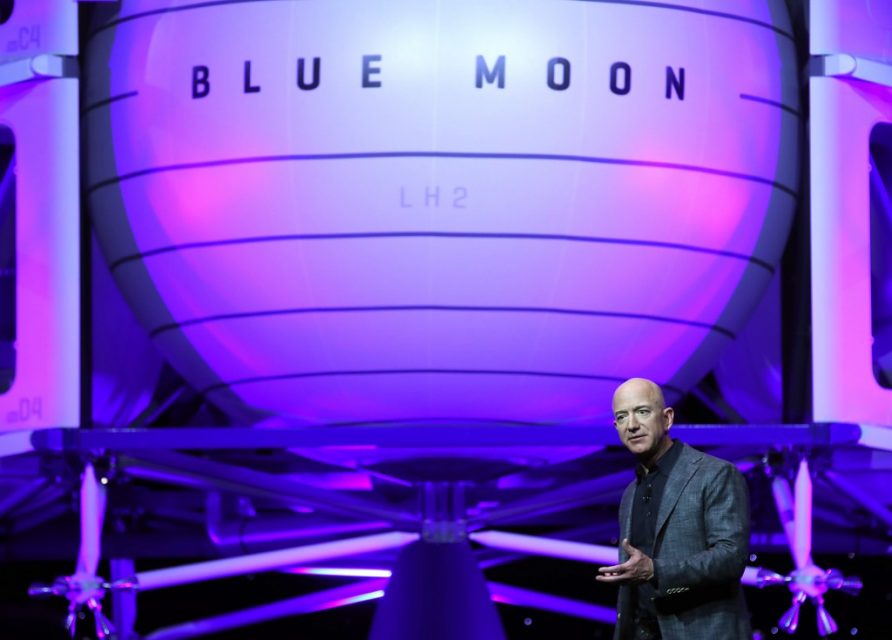
WASHINGTON, United States (AFP) — Jeff Bezos, who heads both Amazon and space company Blue Origin, unveiled a lunar lander Thursday that he said would be used to transport equipment, and possibly human beings, to the south pole of the Moon by 2024.
“This is Blue Moon,” he said at a presentation in Washington, as curtains lifted to show a mock-up of a huge vessel weighing many tons and able to carry four self-driving rovers.
“It’s an incredible vehicle, and it will go to the Moon,” he declared.
The vehicle has been under development for the past three years, he said. It will be capable of carrying scientific instruments and also rovers for humans.
The goal is to land on the Moon’s south pole, where ice deposits were confirmed in 2018.
Water can be exploited to produce hydrogen, which in turn could fuel future exploration of the solar system.
Fully loaded with fuel, Blue Origin will weigh some 33,000 pounds (15,000 kilograms), which will decrease to about 7,000 pounds when it is about to land, he said.
Bezos didn’t announce a specific date for the project’s first launch, but said the lander would be in ready in time to make President Donald Trump’s announced timeline to return people to the Moon by 2024.
“We can help meet that timeline, but only because we started three years ago,” he said. “It’s time to go back to the Moon, this time to stay.”
The announcement came as Bezos outlined his broader vision to build an infrastructure that would sustain the colonization of space by future generations of humans and shift polluting industries off the Earth.
This would involve the construction in space of artificial worlds inspired by designs first proposed by the late physicist Gerard K. O’Neill, one of Bezos’ heroes.
Blue Origin is working on two other major projects: New Shepard, a suborbital rocket to fly tourists into space; and New Glenn, a heavy lift, partly reusable launch rocket.
Bezos confirmed his commitment to fly the first people in New Shepard this year, and New Glenn in 2021.
The New Shepard rocket first reached space last year, achieving a height of 66 miles in April 2018.
© Agence France-Presse







